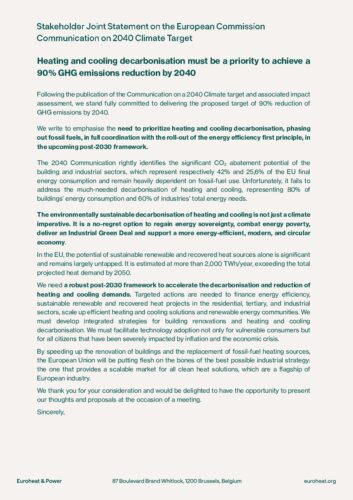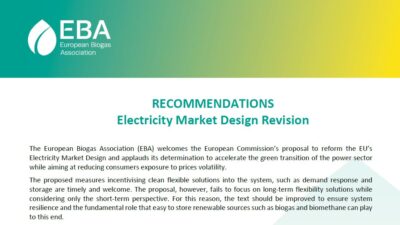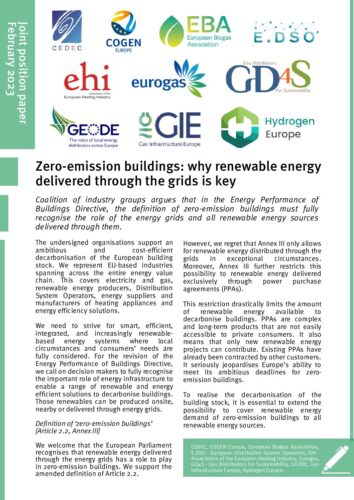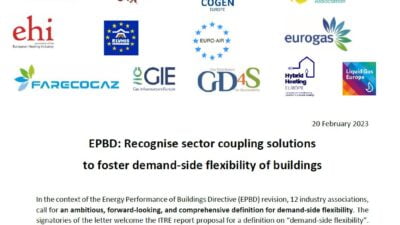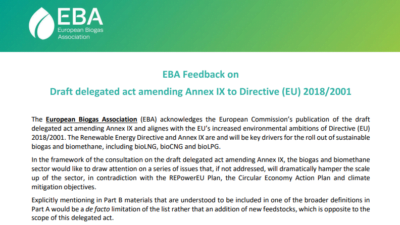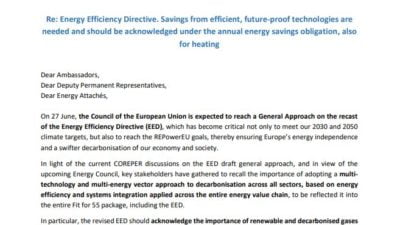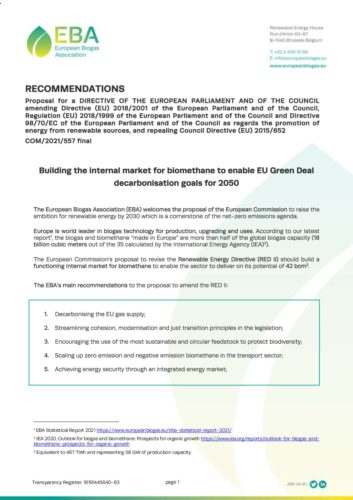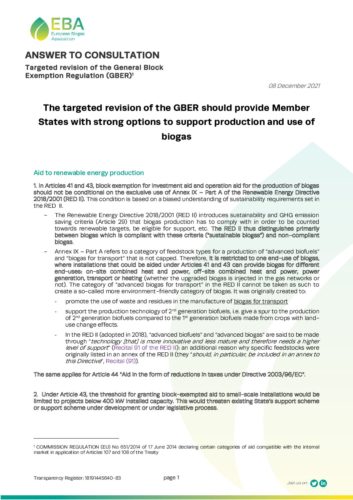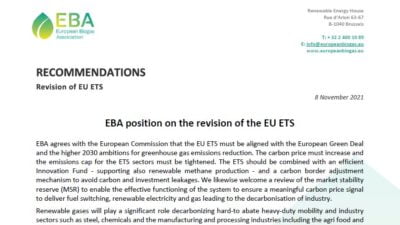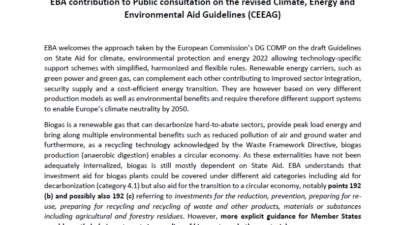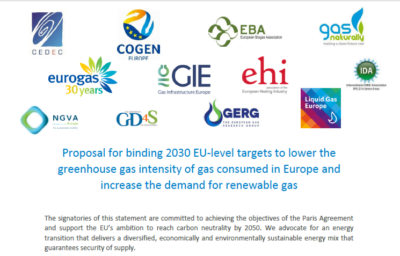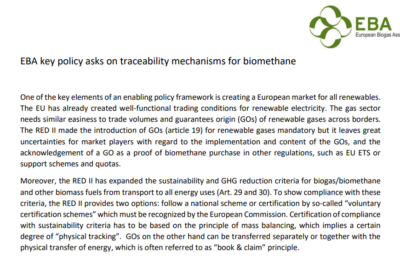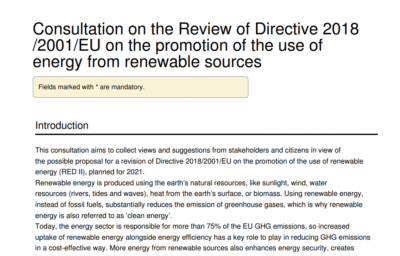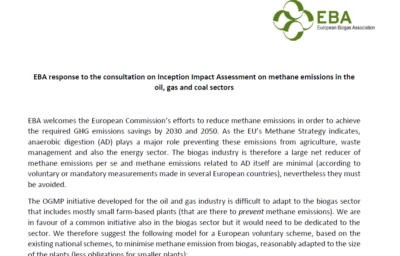Overview

The 2018 Renewable Energy Directive (“RED II”) includes a legally binding EU-wide target of 32% for renewable energy by 2030, incorporating an annual increase of 1.3% for renewable energy in the heating sector and an end target of 14% renewables in the transport sector by 2030. This Directive is currently being revised, and the targets to meet by 2030 will be higher in order to put EU on the right trajectory to achieving climate neutrality by 2050. Biogas is a renewable energy source, contributing to the integration of the smart sector, offering flexibility to the electricity grid and allowing increasing penetration of variable renewables, helping abate transport’s GHG emissions and decarbonise the gas grids.
Impact
The 2018 Directive is certainly a positive step towards the large-scale take-up of renewable gas in the next decade. It facilitates the access of biomethane to the natural gas grid, extending guarantees of origin from renewable electricity to renewable gas, and making it easier to trade biomethane across borders. The sustainability policy establishes requirements to ensure substantial GHG emissions savings are delivered compared to the use of fossil fuels, makes sure that sourcing does not negatively impact the environment or cause land displacement, and identifies advanced feedstock that deserves special attention and support. The review of the Directive will strengthen targets and constitute a further driver towards cleaner energy sources. Conversely, the hasty revision of sustainability criteria is having an impact on legal certainty and will negatively impact the administrative burden for small operators.
Our ambition
- To set a higher Renewable Energy Target to put Europe on track towards its climate neutrality ambitions.
- To ensure legal certainty and shield small operators from excessive red tape.
- To offer guidance and set clear rules to fast-track permits and authorisations.


